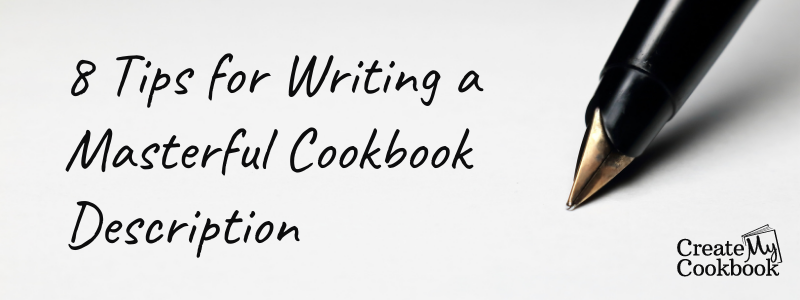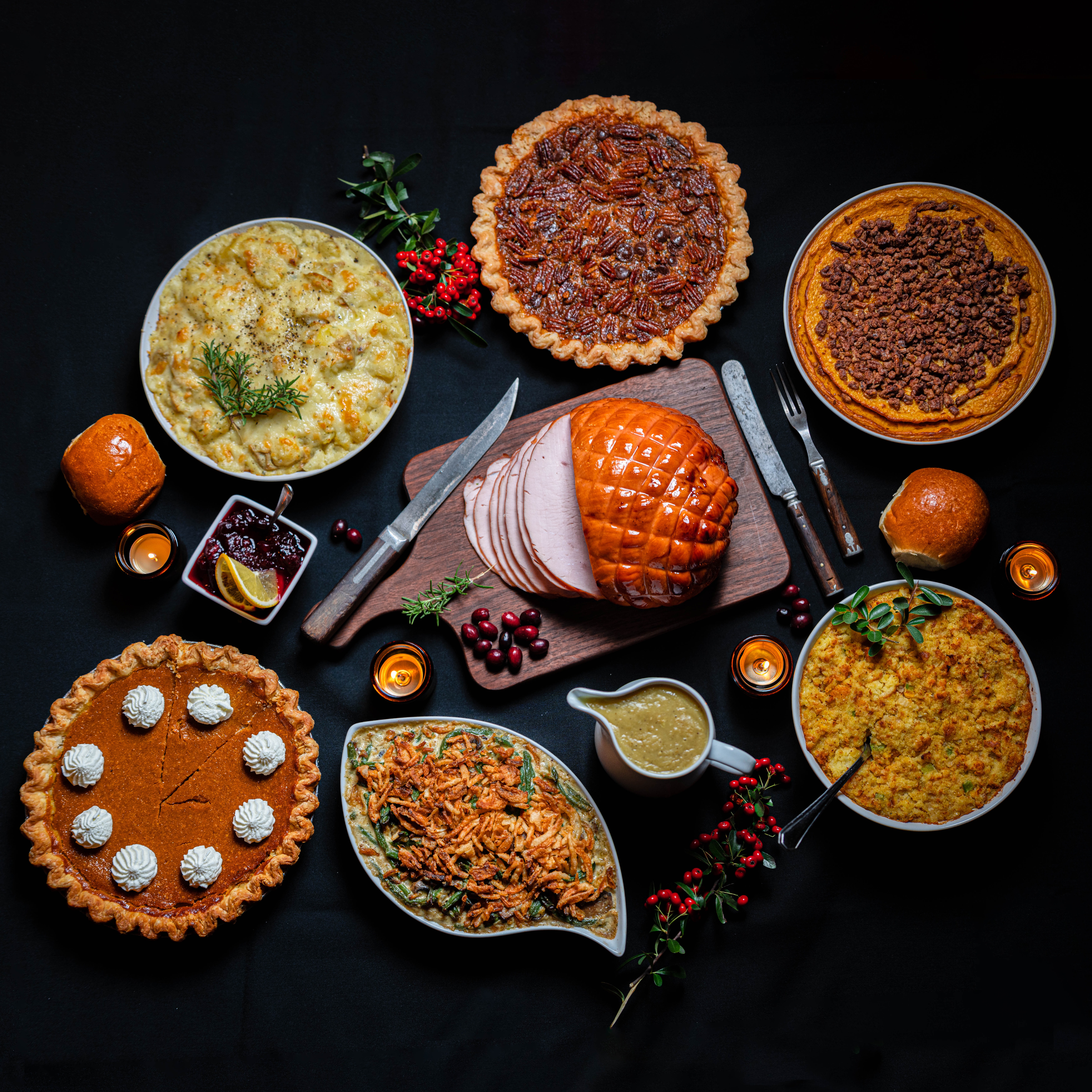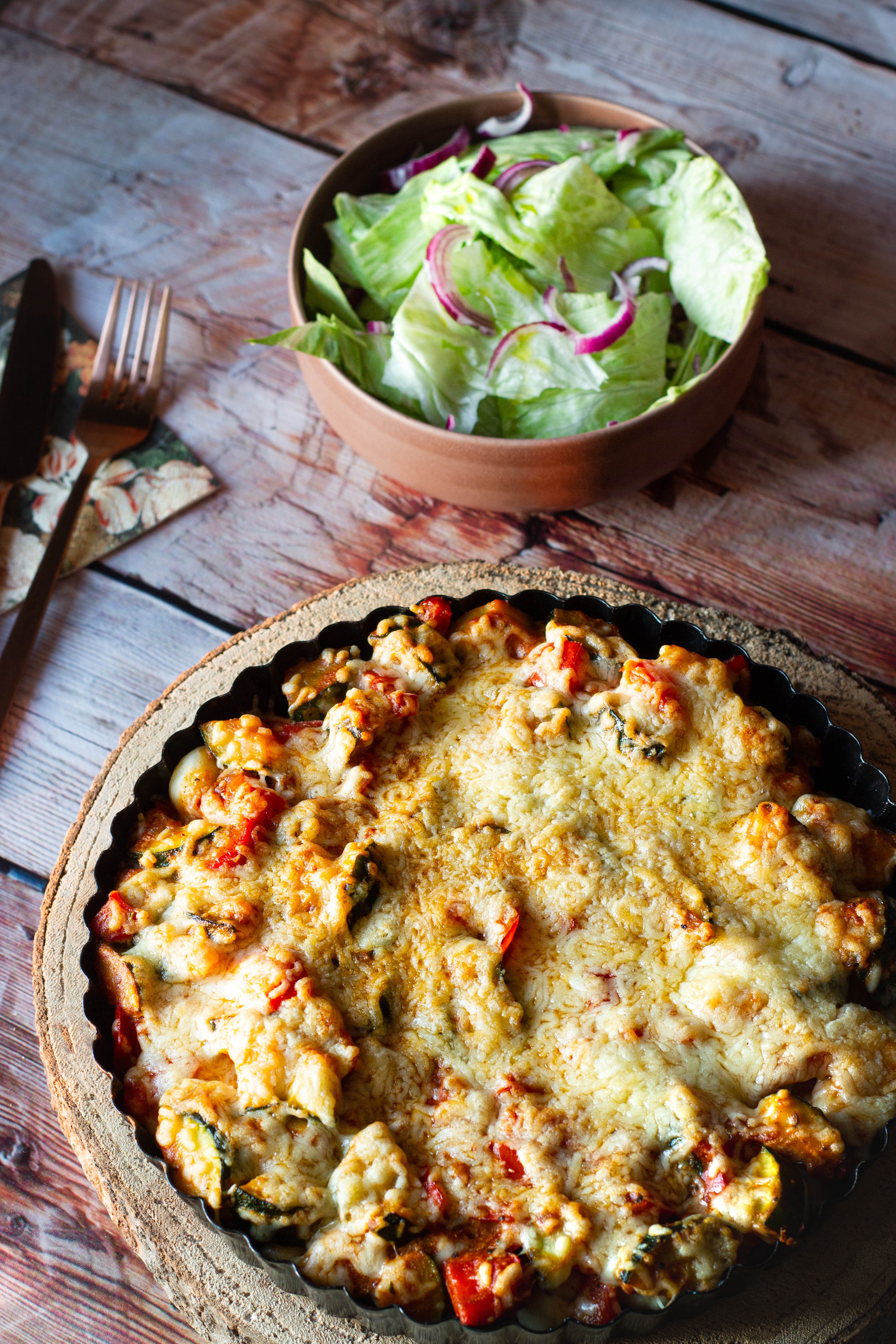8 Tips for Writing a Masterful Cookbook Description
Guest Blogger - Oct 07, '21 - Branding - Cookbook Ideas - Design - Publisher's CornerJessica Fender is a professional writer and educational blogger. Jessica enjoys sharing her ideas to make writing and learning fun. Today she's sharing 8 tips for writing a masterful cookbook description!
People do buy cookbooks. And people like getting cookbooks as gifts. There are the classics that have been around forever – The Joy of Cooking for example.
But cookbooks, like everything else, have evolved. Anyone who looks at a bookstore section on cookbooks will see how. There are now specialty cookbooks – specific types of dishes, seasonal dishes, and such.
These newer types of cookbooks will have engaging and often catchy titles to attract browsers. The next most important piece of writing will be that description. Browsers will read that description, perhaps thumb through a few of the recipes, and then make a purchase decision.
The Description is a Piece of Marketing Content
Because the cookbook description is so important, authors should take it very seriously. It needs to be engaging, creatively written, and motivate potential buyers to make that purchase. You have to look at that description as a sales pitch. If it’s done right, it will sell books.
So here are eight tips for writing a description that is bound to sell books.
1. The First Line Must Be a Hook
You may remember when you were in school and you had to write essays. You were taught that the first sentence had to be a “hook,” something that would immediately grab the attention of the reader. The same is true for your cookbook description.
If, for example, your cookbook has a theme of easy Thanksgiving meal recipes, then focus on this as your hook. Your first sentence might be something like, “Tired of the time and stress of Thanksgiving cooking? Fix a feast in half the time with these simple recipe ideas.” The “hook” should focus on the most compelling reason for someone to want to buy your book.
2. Hit a “Pain Point” of Your Audience
These are marketing terms which you may not be familiar with. A “pain point” is actually a gap between where a consumer is right now and where they would like to be. How can your cookbook put them where they want to be? Suppose your book contains simple but delicious budget dinner recipes that can be made in 30 minutes or less. The busy career woman or man needs this, because they do not want to continue the expense of carryout (or worse, fast food) or spending an hour or more in the kitchen after a long and stressful day of work.
3. State How Your Cookbook Will Provide a Solution to Their Pain
Be very clear how your cookbook can solve the pain point of the reader. For example, “Here are over 100 recipes for delicious and healthy meals that can be slapped together in 30 minutes or less. And none of them requires any exotic ingredients that might be hard to find.”
4. Tell Your Story to Legitimize Yourself
Everyone loves a story and they will like hearing yours. How did you come to produce this cookbook? Maybe you have been making Thanksgiving meals for a large family for 30 years; perhaps you have been a career parent for a long time and have perfected recipes that you can whip up quickly with simple ingredients. Telling your story personalizes your book and helps you establish a connection with potential buyers. Selling today is all about relationships – you need to do what you can in that description to establish that relationship. It is your one chance.
5. Tone and Style of Writing
If you were to visit the Rolex Watch and the Red Bull websites, you will understand what is meant by tone and style. Rolex uses sophisticated and formal language. Red Bull, on the other hand has a style and tone that is fully casual and sometimes even a bit irreverent.
What is the theme of your cookbook? Is it gourmet cooking? Is it summer backyard barbecue casual? The language you use and the style of writing must match that theme.
6. You Can Divide Your Description into Short Chunks
While most books of fiction have a rather short description inside the book cover, your cookbook does not have to do that. You can have a single page as soon as a “looker” opens the book, with a photo of yourself (or the group) and the description underneath. Photos always grab attention, so be sure to use a good one.
You can divide your description into short blurbs. First the “hook.” Then start a new paragraph, very briefly describing the problem your cookbook solves and a short description of the types of recipes the consumer will find inside. The next section can be about the author(s) and what gives you that legitimacy.
If you are not masterful with words or writing, check with FreeEssayWriters, a writing company where you can hire a writer who is creative and who can add pizzazz to your description or perform a grammar check on what you have written.
7. Speaking of Grammar
Never, never, never publish your cookbook with any type of writing that could hold grammar errors. You never know who will be reading the text you have written. And for many, grammar, spelling and punctuation errors are a “turn off.” It reduces your credibility; even poor grammar has nothing to do with cooking. Read through all of your descriptions several times; have friends read them. And when in doubt, get a professional grammar check. There are free tools on the Internet.
8. Individual Recipe Descriptions
Lookers who have been intrigued by your opening description will then thumb through and look at a few of your recipes. In addition to an amazing photo of the finished product, each recipe should have a very short but compelling description. A Career mom, who has come up with 30-minute and under recipes for week nights, will title the dish, and then show a photo of a casserole, saying something like, “This is our every-other-Thursday meal. And there’s never any leftovers. There won’t be at your house either.”
Consider your title as part of your description. Coming up with catchy titles (e.g., “Millionaires Shepherd’s Pie”) will intrigue a reader. Again, get some help with these titles if you aren’t feeling creative.
Wrapping It All Up
Your cookbook description is an ad – never forget that. Your words (and visuals) at the very beginning of the book have to engage, intrigue, and, in some cases, even entertain your reading audience. The goal is to capture enough attention that a “looker” will want to explore your book a bit more, see that it can provide a solution to a problem, and that it has been composed by someone with the background and experience to be legitimate.
Next: Recipe of the Week | Cranberry Salad



